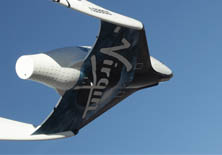NASA awards contracts to seven private space firms

With the end of the Shuttle program, the National Aeronautics and Space Administration (NASA) hopes to rely on commercial space companies to fill the void for near-earth delivery of payloads.

To this end, NASA just announced it has selected seven companies to integrate and fly technology payloads on commercial flights near the boundary of space.
The awards, part of NASA's Flight Opportunities Program, provide each vendor will receive an indefinite-delivery, indefinite-quantity contract. These two-year contracts, worth a combined total of $10 million, will enable NASA to draw from a pool of commercial space companies to deliver payload integration and flight services. The flights will carry a variety of payloads to help meet the agency's research and technology needs. Through these indefinite-delivery, indefinite-quantity contracts, NASA intends to provide frequent flight opportunities for payloads on suborbital platforms.
As NASA Chief Technologist Bobby Braun put it:
"Through this catalog approach, NASA is moving toward the goal of making frequent, low-cost access to near-space available to a wide range of engineers, scientists and technologists. The government's ability to open the suborbital research frontier to a broad community of innovators will enable maturation of the new technologies and capabilities needed for NASA's future missions in space."
The selected companies include Armadillo Aerospace, Near Space Corp., Masten Space Systems, Up Aerospace Inc., Virgin Galactic, Whittinghill Aerospace LLC, and XCOR.
Of course, $10 million is a drop in the bucket compared to the budget needed to sustain spacefaring enterprises. And, as astrophysicist Neil deGrasse Tyson recently pointed out, we need to put imagination back into our space efforts. Perhaps the innovation that a private space race can create will revive many dreams.
This post was originally published on Smartplanet.com